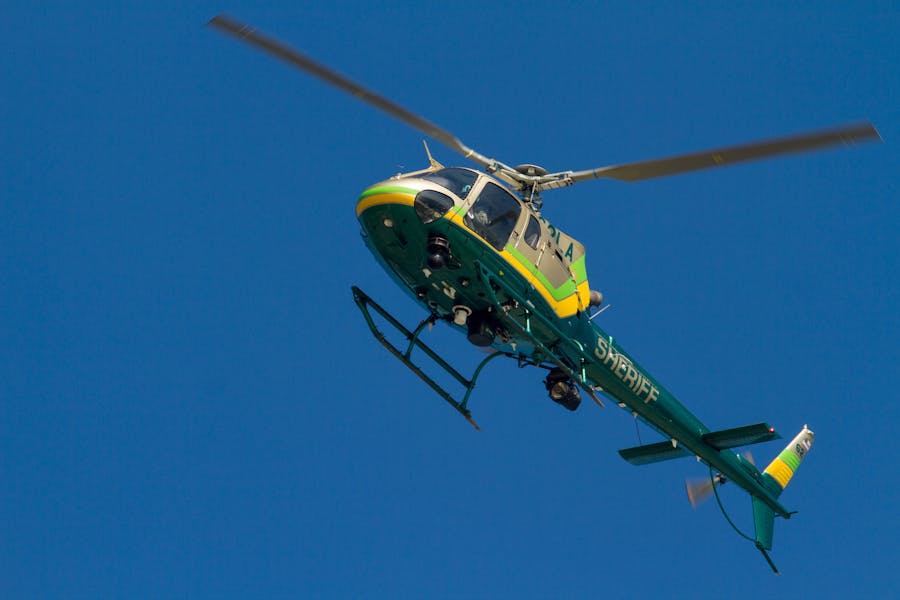Helicopter accidents can have serious consequences when they occur. Operating a helicopter comes with unique challenges, but its accident rate is similar to that of other types of general aviation.
How common are helicopter crashes in the U.S.? The United States Helicopter Safety Team (USHST) reports there were 78 helicopter accidents in 2024 in the U.S., 11 of which were fatal. A total of 26 deaths resulted from those accidents.
Common reasons for helicopter accidents include pilot error and mechanical failure. Helicopter safety largely depends on the pilot. Reducing the risk of human error is important, as even small mistakes can lead to fatal consequences.
This article will discuss the patterns or trends that can be observed in helicopter safety statistics.
Overview of Helicopter Accident Statistics
Helicopter incidents happen often enough, statistics say, to make up a serious portion of aviation accidents.
According to the data, helicopters have a higher rate for accidents than their fixed-wing counterparts. Hundreds of helicopter accidents are reported almost every year, resulting in injuries and deaths.
Helicopter accidents are thought to be caused by the unpredictable nature of helicopter flight and the typical environments in which they operate. When boarding a helicopter, both the pilot and the passenger must be aware of the risks involved.
The frequency of helicopter accidents indicates the importance of safety and proper training. Understanding how often accidents occur is the first step in making helicopter operations safer.
Common Causes of Helicopter Accidents
One of the leading causes of helicopter accidents is pilot error, which can be due to a lack of training or poor decision-making under stress.
Mechanical failure is another major cause. Poor maintenance, broken parts, and other issues are the causes of these types of helicopter accidents. Weather can contribute to helicopter accidents, particularly when visibility is low, winds are strong, and storms threaten flight safety.
Other factors could include the helicopter being operated beyond its intended performance limits or performing complex maneuvers by an unqualified or inexperienced pilot. Human factors such as fatigue and distractions can cause some fatal errors.
Trends in Helicopter Safety Over the Years
Evolving safety regulations and technologies have resulted in significant improvements to helicopter safety trends.
Accident rates have decreased as helicopters’ materials and designs have improved over the past years. Better training, with a strong emphasis on safety protocols, enhances pilot decision-making in emergency situations.
Modern avionics also monitor aircraft performance and warn pilots of potential issues. Regular helicopter maintenance and inspections help keep helicopters in good condition. Helicopter companies reward pilots and maintenance personnel who meet strict requirements.
Previous incidents prompt safety practice inquiry, analysis, and modification, fostering a culture of continuous improvement. Cumulative safety measures make flying safer for pilots and passengers.
Comparison of Helicopter Accidents to Other Aviation Incidents
One of the major differences between helicopter accidents and other aviation accidents is the area in which they operate. Unlike commercial airlines, which account for the majority of aviation accidents, helicopters operate in both urban and remote areas.
Helicopter-related accidents occur more frequently than fixed-wing aircraft accidents. Helicopter accidents mostly occur because of pilot error, with mechanical failures and weather conditions following closely behind.
Helicopter flights frequently involve more dangerous situations, such as medical evacuations or search-and-rescue missions. Comparing helicopter and commercial airline operations allows for a better understanding of the complexities of helicopter safety and the need to address these issues across the aviation community.
Every accident must have safety systems adequately implemented specific to that field to reduce the risks efficiently.
Innovations and Safety Measures in Helicopter Operations
Safety procedures and accident rates have changed significantly with helicopter operations and the innovations surrounding them. Advanced avionics combined with real-time data analytics make it possible for the pilot to have an accurate assessment of a situation.
Enhanced vision systems will detect risks even in low visibility to make flights safe. Automatic safety systems, such as gross terrain awareness and warning systems, alert pilots to serious threats.
Annual training routines now include simulation-based training scenarios, allowing pilots to become familiar with emergencies without ever having to face them. To maintain helicopter reliability and airworthiness, predictive analytics is used for maintenance.


